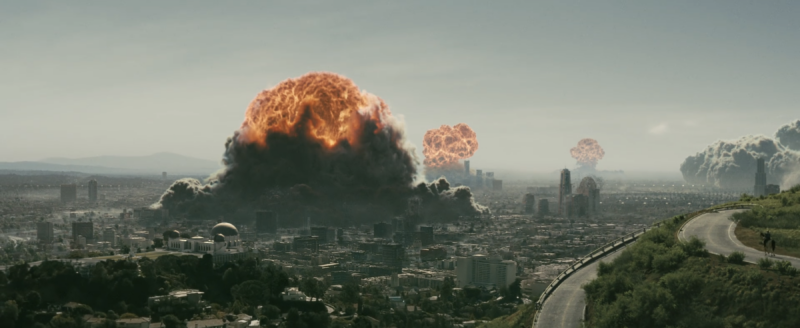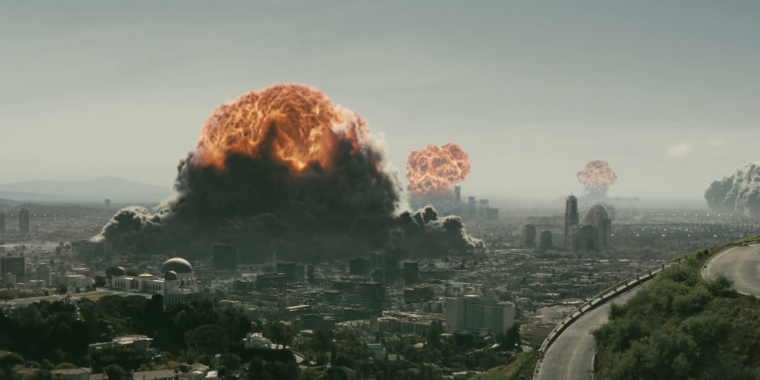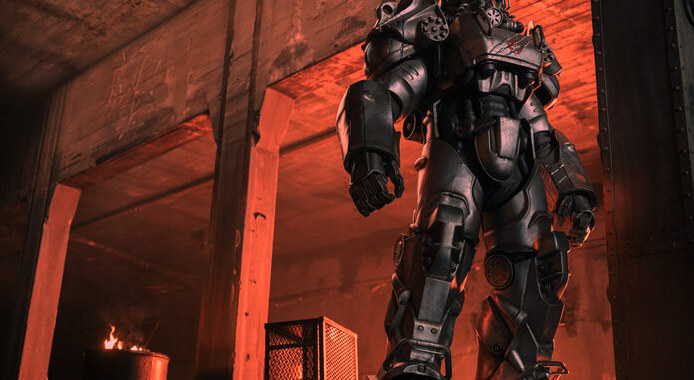War never changes: A Fallout fan’s spoiler-laden review of the new TV series

Enlarge / The nukes went off in 2077 in Fallout’s universe. The show tells us more about this event than we’ve learned from the games before.
Amazon
It’s been just over a week since the Fallout TV series premiered on Amazon Prime, and one thing’s for sure: It’s a huge hit. You can hardly open a social media app without seeing content about it, the reviews are positive, and the active players for the Fallout games have doubled over the past week.
A few days ago, I shared some spoiler-free impressions of the first three episodes. I loved what I’d seen up to that point—the show seemed faithful to the games, but it was also a great TV show. A specific cocktail of tongue-in-cheek humor, sci-fi campiness, strong themes, great characters, and visceral violence really came together into a fantastic show.
Still, I had some questions at that point: Would the franchise’s penchant for satire and its distinct political and social viewpoint come through? Where was all this headed?
Like a lot of us, I’ve now finished the series. So if you have, too (or if you haven’t but just don’t care about spoilers), it’s time to dive into all eight episodes of season one together.
I’m a long-time Fallout fan, so I’ll focus on how the show ties in with the games, but like the show itself, I aim to make this interesting even for the newbies.
Heavy spoilers for Fallout season one start here, as well as a few spoilers about Fallout New Vegas and Fallout 4.
Something for everybody
So was the show as good after eight episodes as it was after three? Absolutely. If anything, the show only got better as it progressed. The more inducted into the world, lore, and characters new viewers became, the more effective the show could be.
There was a lot to set up, after all. Some of us have been playing the games for years, so we knew all about Vault-Tec, the Brotherhood of Steel, the Enclave, the New California Republic, Pip-Boys, gulpers, and ghouls. But if you’re coming into the world fresh, that’s a lot to take on.
I was worried while watching that despite the show’s efforts to introduce new viewers, it might not be good enough, but I’ve been told by multiple people who haven’t played the games that they didn’t have trouble keeping up.
Once the various elements were established, the show was able to hit its stride and start bringing in the aspects of Fallout that weren’t prominent in the opening stretch.
Further, it expertly walked the line to give established fans something to chew on at the same time. The timeline of Fallout lore and stories spans hundreds of years, but the TV show is actually set after all of the games.
| Event | Year |
|---|---|
| Bombs Drop | 2077 |
| Fallout 76 (2018) |
2102 |
| Fallout (1997) |
2161 |
| Fallout 2 (1998) | 2241 |
| Fallout 3 (2008) |
2277 |
| Fallout New Vegas (2010) | 2281 |
| Fallout 4 (2015) |
2287 |
| Fallout Season 1 (2024) |
2296 |
That meant the show revealed some things about what happened to certain factions and places that previously appeared in the games. Most notably, Shady Sands is a crater, and the New California Republic—one of the most important factions and one of the strongest governments from the games—no longer exists as we knew it.
That led some fans to speculate that TV series executive producer and game creative director Todd Howard was trying to make the popular New Vegas game (which was not made by his team) non-canon, but in a recent interview, he clarified that both the show and New Vegas are very much canon, noting that the bomb fell on Shady Shands very shortly after the events of that game. The timeline on the show is cutting it close, but a generous interpretation allows it all to line up.
Of course, the show expanded on some elements from the games in ways that could be seen as breaching canon. You could write most of them away as things the games never addressed—like the vials ghouls must consume to avoid going feral or the origin story of gulpers. The games at times implied different things about both of those aspects, but they didn’t necessarily contradict them.
The series also canonized some specific choices that players could make in some prior games. For example, it’s confirmed that the Brotherhood of Steel airship seen in the show is the same one seen in Fallout 4, meaning that the canon outcome for Fallout 4 is obviously not one where that airship was destroyed. (Players of that game had the option of pursuing paths that led to its destruction or not.)
-
Shady Sands as it’s seen in the show.
Amazon
-
New Vegas is teased as the next destination.
Amazon
-
The last moments had a brief tease with what appears to be a Deathclaw skull, too.
Amazon
With minimal exceptions, previous games in the series avoided canonizing outcomes like that by being set decades or even centuries (as well as hundreds or even thousands of miles) apart—such that it wasn’t necessary to reveal what happened in those cases. Since this show is set in a region that is well-documented in prior Fallout titles, that’s not the case here.
The tease that we’re going to New Vegas next season probably means that several multiple-choice outcomes from that game will have to be canonized, too. Is Mr. House still running the show? What happened to Caesar’s Legion? Why does New Vegas look so bombed out compared to how it appeared in the game? We’ll probably find out.
All told, new fans got to explore the world of Fallout for the first time, even as longtime fans got to see where the story has gone since they last played the games. The story hadn’t been moved forward in nine years, since 2018’s Fallout 76 was actually a prequel that took place long before any of the other games in the series.
It took some skillful work to serve both of those audiences without compromising the experience of the other, so kudos to the show’s writers.
War never changes: A Fallout fan’s spoiler-laden review of the new TV series Read More »

